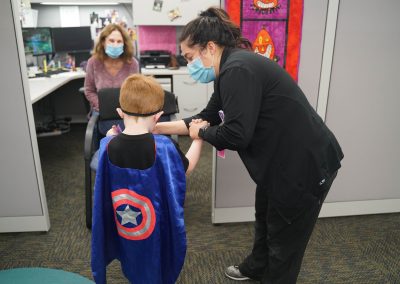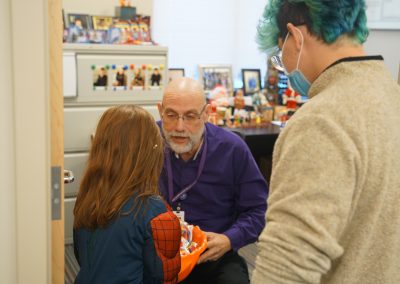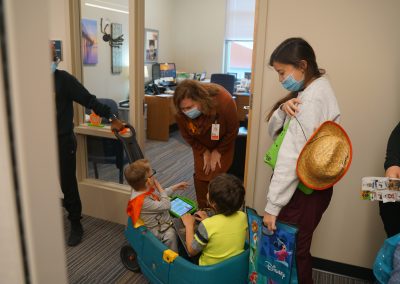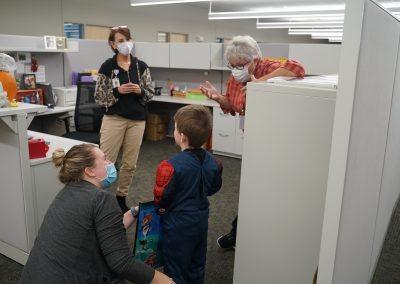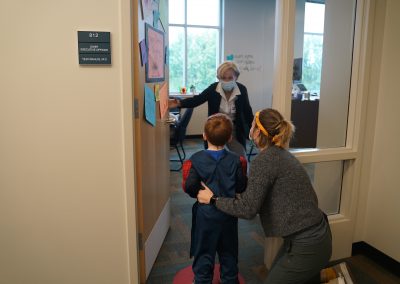Tips for Helping Your Child with Autism Trick-Or-Treat
For kids with autism, trick-or-treating can be overwhelming without the right support and preparation. ChildServe ABA Clinical Manager Sam Cermak is sharing her tips to help parents raising a child with autism have a great trick-or-treating experience!
Trick-or-treating and Halloween can be a source of stress for everyone in the family. The good news is that there is no “right way” to do Halloween! If you and your child choose to trick-or-treat, here are a few tips that may help support your child’s trick-or-treating adventure.
1 – Talk through Your Night Before You Start
Sometimes activities can feel more overwhelming if we do not know when they will end. My first tip for parents is to make sure trick-or-treating is presented to your child as having a distinct end — in ABA we call this a “close-ended activity.” Close-ended activities like puzzles or shape sorters have a distinct start and end. You can transform trick-or-treating into a close- ended activity by deciding with your child how many houses they will go to. For example if you and your child hope to go to 3 houses you can show your child three houses on a piece of paper and color them in as you go, or counting them out loud with your child.
2 – Practice!
Trick-or-treating is a complicated task that is only practiced once a year and can be a source of anxiety for some children with autism. Practice by dressing up in the costume, saying trick- or-treat, and having your child get a treat. You can practice by knocking on doors or get your neighbors involved. During practice you can even have your child’s favorite treat ready for trick-or-treating.
3 – Watch a Video:
Show your child a video of other people trick-or- treating. Seeing other people trick-or-treat and learning the steps of trick-or-treating by watching others can reduce the uncertainty your child may feel.
4 – Consider Your Child’s Communication:
Consider your child’s communication preferences and how you can make these methods easy and accessible while trick-or-treating. When trying new things, it is best to rely on communication that feels easiest for your child. You and your child may consider the use of visuals, adding “trick-or-treat” to an AAC device, or practicing with your child.
5 – Transitions and Safety:
Transitions and safety are important to consider – evaluate what feels safe for your child. Consider if your child may need alternate ways to transition from one house to another (for example, driving to the homes of friends and family rather than walking your neighborhood, or using a wagon to move from house-to-house). You may also consider if your child will be safe trick-or-treating outside, or if finding an indoor event would be a better option.
6 – Have Fun – Enjoy Your Time!
The most important tip is to consider what makes Halloween special and enjoyable for you and your child. Trick-or-treating and Halloween can be a source of stress for everyone in the family. Consider what is most important to you for trick-or-treating, and what is most important to your child. It may be handing out candy, it may be trick-or-treating over the entire neighborhood, it may be cuddling on the couch watching a Halloween movie. Make the day meaningful for you and what your family prefers.
About
ChildServe improves the health and well-being of nearly 5,800 children each year through specialized clinical, home, and community-based programs and services. We serve children with developmental delays, disabilities, injuries, and other special healthcare needs.
Follow Us
Contact Us
Johnston | 515-727-8750
Ames | 515-232-7220
Des Moines | 515-280-5332
Iowa City | 319-351-5437
Cedar Rapids | 319-777-7450
Links

